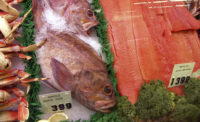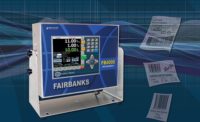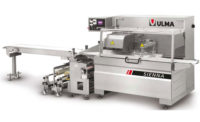CASE STUDY
Frustrated by Faulty Processing, Best Sea-Pack Turned to Triplepoint Environmental

Triplepoint Environmental's patented Ares Aerators sit on the bottom, rather than on the surface of lagoons, and use a combination of fine and coarse bubbles to disburse and mix oxygen into the water, which accelerates treatment. Courtesy Melanie Lux/Best Sea-Pak of Texas.
Best Sea-Pak of Texas, a shrimp processor established at a former catfish plant outside of Houston, was looking to solve its wastewater issues when company owner Trung Nhan found a solution on YouTube: Triplepoint Environmental.
The original owner had set up the first two of the system’s four treatment lagoons up as anaerobic; no oxygen was used to process the wastewater. Best Sea-Pack began processing shrimp and immediately experienced a big problem. There was too much odor and the company received complaints. Making matters worse, the surface aerators required constant maintenance and used a tremendous amount of energy.
“Before the water enters the lagoons, all of the shrimp heads and shells are screened out. We don’t use any chemicals to process shrimp, so everything we put in the lagoons is organic. Eventually it would break down on its own, but oxygen speeds the process. And we weren’t getting enough oxygen to do the job,” Nhan said. “I began researching and learned more about wastewater treatment than I imagined. I also started calling local people in Texas and got proposals. The recommendations were for totally new systems, expensive systems, and would require experts to maintain them.”
During an Internet search, he found Triplepoint Environmental and its YouTube Channel with more than 20 case studies explaining its approach to aeration, ammonia removal and other solutions for food processing plants as well municipal wastewater treatment plants.
The company’s patented Ares Aerators sit on the bottom rather than on the surface of lagoons and use a combination of fine and coarse bubbles to disburse and mix oxygen into the water, which accelerates treatment. The Ares Aerators are controlled on the shore via a blower that connects to each aerator with flexible, heavy-duty tubing and blower PLC for automated control remote monitoring and system alerts.
In early 2021, Justin Bell, a technical sales representative, evaluated Best Sea-Pack and said it was obvious aeration was a was a major cause of the ammonia issue. There were other issues with the levees like erosion, sediment build up, and overall inefficiency that also needed to be addressed.
Nhan’s first stipulation was that Triplepoint use as much as the existing infrastructure as possible. This included three main cells—the first a high-density treatment cell and the next two for settling—leading to wetlands with cattails to bring nitrogen levels down further before discharging into a local creek.
The second stipulation was the system be capable of processing 170,000 gallons per day during the busy season and make it simple to expand to 260,000 gallons a day. Included in Phase One was project design, engineering and build; remediation of the individual cells where needed; installation of all new equipment; and startup services.
Despite delays caused by COVID-related supply chain issues, Triplepoint completed the Best Sea-Pack wastewater treatment project in time for the 2023 shrimp season, which began in mid-May.
“There is no problem with odor, even standing next to the lagoons,” Nhan said. “Our processed water levels of ammonia, TSS, and BOD are way below our permitted amount. We’re also seeing a 10 to 15% decrease in our energy costs despite the Ares Aerators being a higher horsepower than our old surface aerators.”
Best Sea-Pack will continue processing shrimp until the end of December, when activity shifts to delivering shrimp to wholesalers for busy retail seasons.
Looking for a reprint of this article?
From high-res PDFs to custom plaques, order your copy today!





